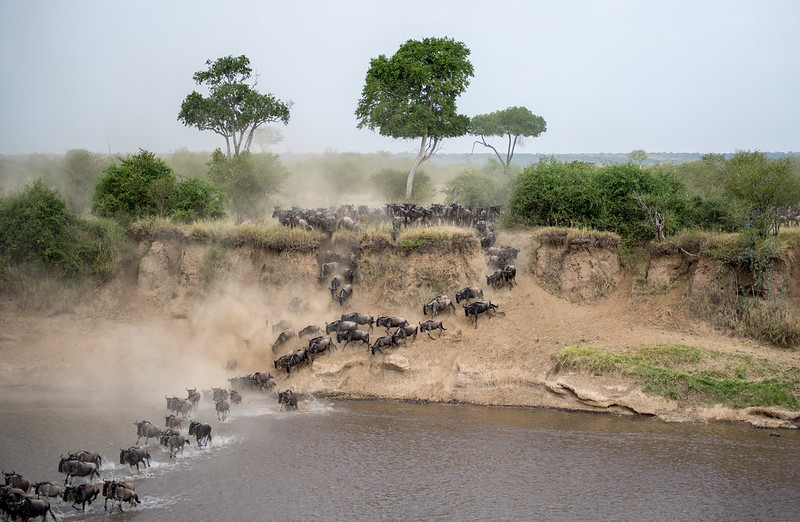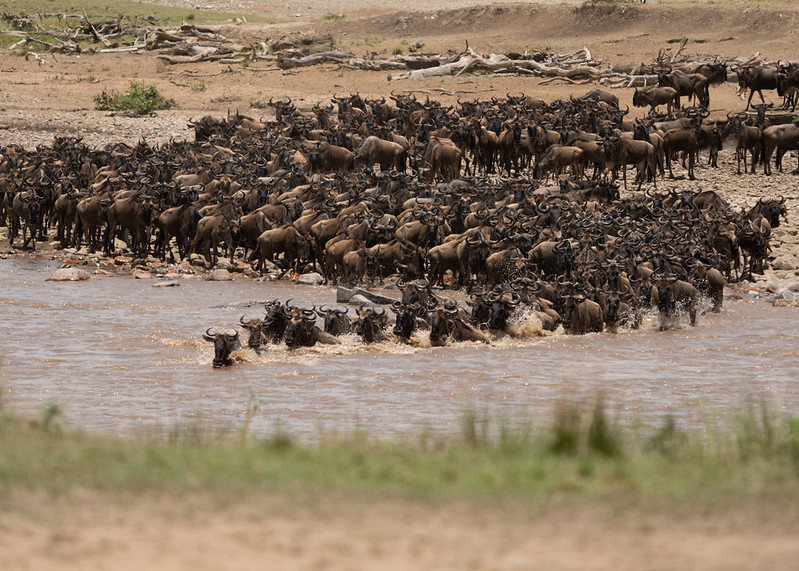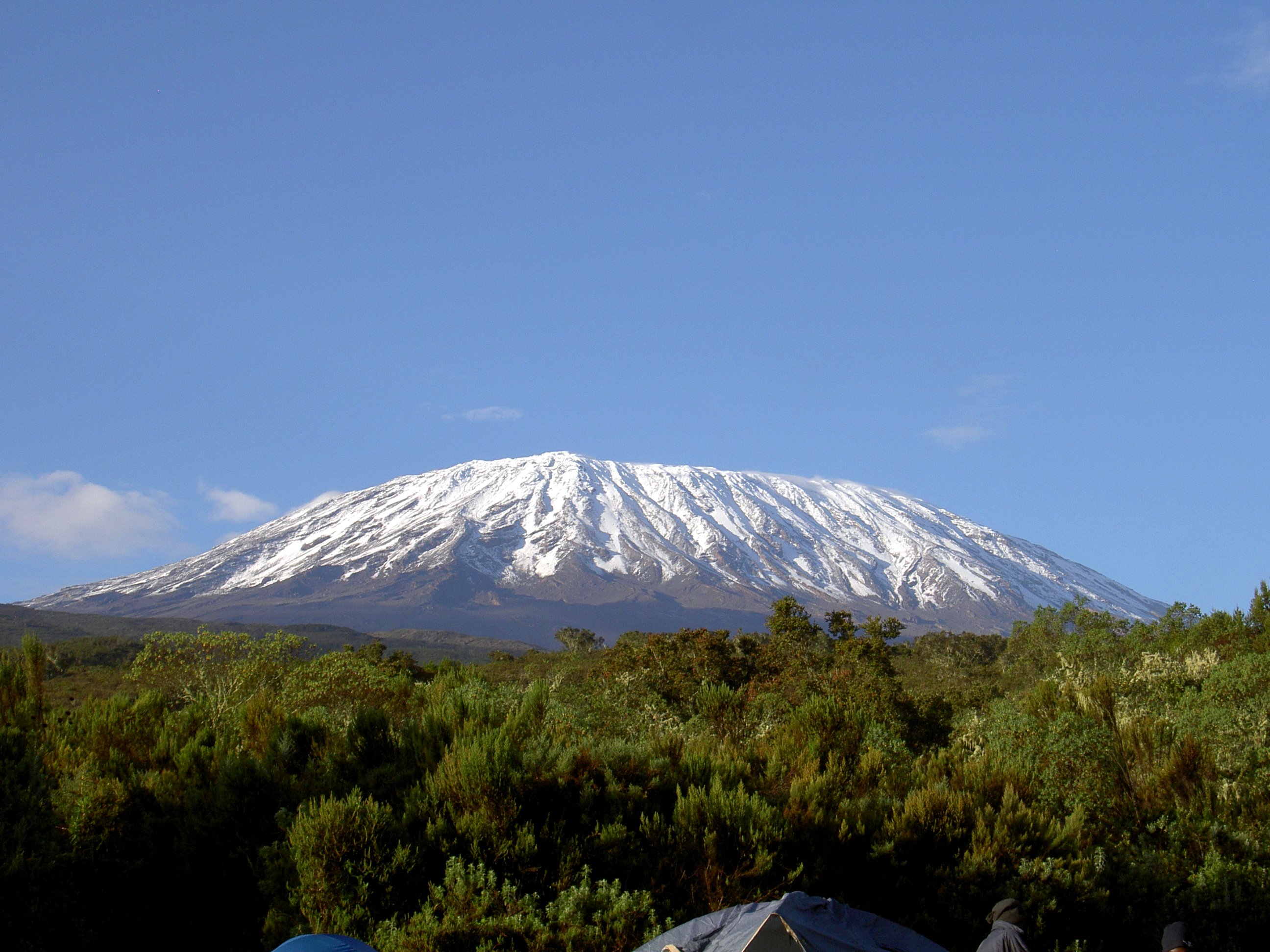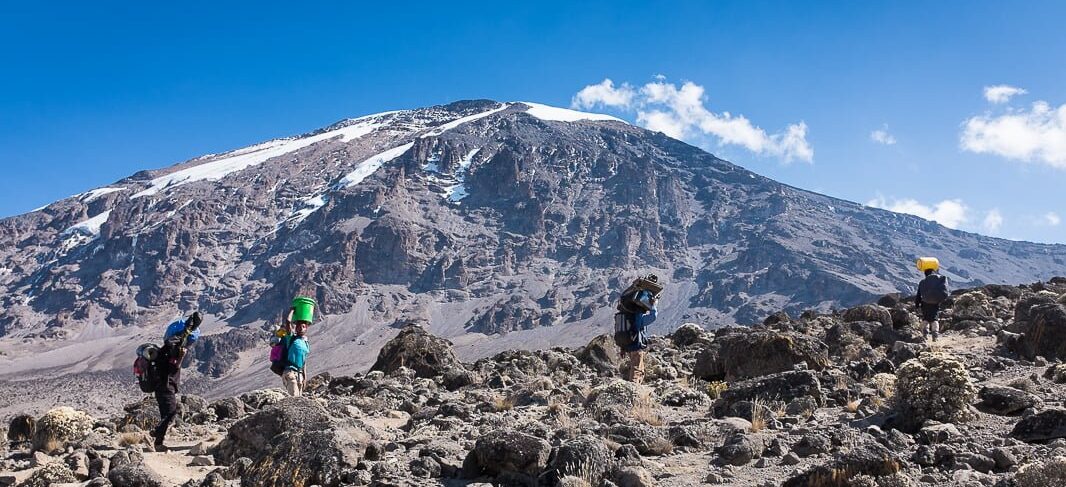Why do Wildebeests and Zebras move together during the wildebeest Migration
Why do Wildebeests and Zebras move together during the wildebeest Migration
The phenomenon of wildebeest and zebras moving together during the wildebeest migration is primarily driven by mutual benefit and survival strategies. The wildebeest migration is a massive annual movement of millions of wildebeest, along with thousands of zebras and other herbivores, in search of fresh grazing grounds, water sources, safe breeding grounds and also to give birth. The animals are driven by their instinct following the rain patterns. The migration takes place between the Serengeti National Park in Tanzania and the Maasai Mara National Reserve in Kenya. Therefore, in order to witness this action, you can visit Tanzania or Masai mara.
The great Migration takes place every year where by millions of wildebeests, zebras, antelopes and other herbivores animals move in search for food accompanied by the predators including the lions, Cheetah and leopards who are frequently looking for the animals to feed on. This unique experience draws many visitors and photographers coming to witness the world cup of animals. This movement demonstrates the interaction and co-operation between the wildebeest and the Zebras as well as the struggle to survive in the wild amidst the challenges that come with the Migration such as attack by the predators and also during the crossing of Mara River infested by dangerous Crocodiles. whereby, during the Migration, the wildebeest and Zebras depend on one another for survival using their sense organs.
Therefore, there are several reasons why wildebeest and zebras form mixed herds and move together, including;
The larger the numbers, the Safer they feel/ Security precautions
Both wildebeest and zebras are prey species that face constant threats from predators like lions, cheetahs, hyenas, and crocodiles. By moving in large herds, they increase their collective chances of detecting predators early, confusing them with their sheer numbers, and minimizing individual risk of predation.
whereby, in the wild. the wildebeest and Zebras make up the best companions, there are over millions of wildebeest and thousands of Zebras moving together during the great Migration each year. The bigger the group the greater the security also due the swarm intelligence of the wildebeest, they can easily avoid threats by crossing the waters and other open areas and because are different animal species migrating, the attack can be diverted.
Dilution effect: The sheer size of the mixed herds makes it challenging for predators to single out and target any particular individual. This “dilution effect” provides a form of protection for each animal in the group.
Both Wildebeests and Zebras have got different feeding behaviours:
Wildebeest and zebras have different feeding preferences and eating habits. Although, they are both herbivores and known to be sharing the same food supply. Zebras mainly graze on the taller grasses, while wildebeest feed on shorter grasses. This way, they can coexist without competing for the same food resources.
Better detection of resources:
As the combined herd moves across vast landscapes, they are more likely to find new grazing areas and water sources. This collective exploration allows them to make the most of available resources and prevents any single group from overgrazing an area.
Their Unique and dynamic social behaviour between the animals.
Wildebeest and zebras exhibit social behaviour within their species, and the presence of one species may influence the other’s behaviour positively. For example, zebras have excellent eyesight, and they are known to be alert and cautious. Wildebeest can benefit from the zebras’ watchfulness and may follow their lead in detecting potential dangers.
Overall, the symbiotic relationship between wildebeest and zebras during the migration is a remarkable example of how different species can cooperate and survive in the challenging and dynamic environment of the African savannah.
Serengeti National Park Best time for Wildebeest Migration.
Best time to Watch the Serengeti Migration
Its good to have all the necessary information about wildebeest Migration, although the experience takes place all year round, the exact timing for the wildebeest Migration can not be predicted reason being that the movement of the animals entirely depend on weather and the rainfall patterns. The migration begins from the plains of Serengeti from the month of June to October, then by April to May, the Serengeti dries up and the herds begin to Migrate westwards toward the Grumeti River. which presents challenges when it comes to river crossing, they are attacked by predators and crocodiles infested rivers. This also the best time for viewing the wildebeest migration as well as wildlife encounters. Then from August to September, the herds move towards the Masai mara, crossing through the Mara River infested with crocodiles too comes with its challenges where by many animals lose their lives from attack by the predators and crocodiles. October is much more epic and the best time when the wildebeest Migration is at its peak and best time to watch the Migration am also for wildlife enthusiasts.




